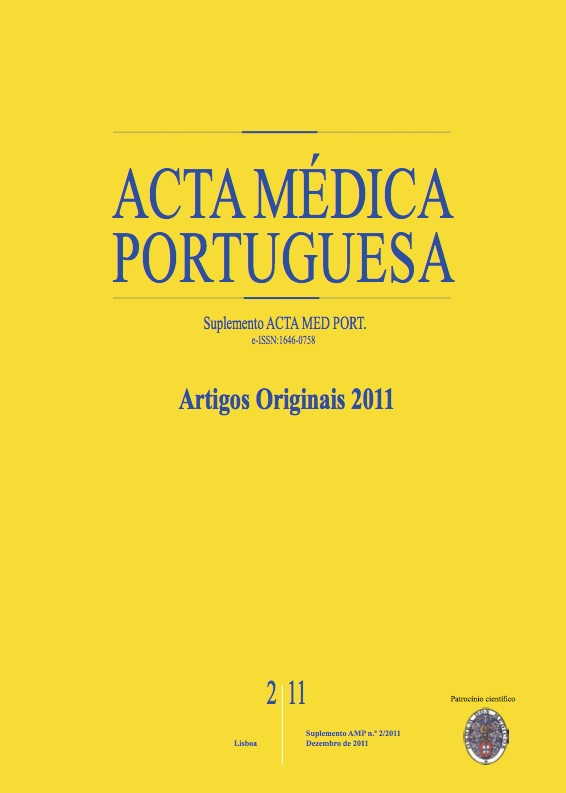Pediatric inflammatory bowel disease: is it still increasing?.
DOI:
https://doi.org/10.20344/amp.1483Abstract
Crohn's disease (CD), Ulcerative Colitis (UC) and Indeterminate Colitis (IC), commonly known as Inflammatory Bowel Disease (IBD) represent a heterogeneous group of chronic diseases of unknown origin and varying course, diagnosed in pediatric age at 25 to 30% of cases. Epidemiological international studies studies show IBD incidence has increased exponentially in industrialized nations over the last 50 years.Characterization of the pediatric population diagnosed with IBD, followed at medical consultation in Gastroenterology at Hospital de Dona Estefânia (HDE).Descriptive and retrospective study by consulting the medical files of patients diagnosed with IBD followed between 1987 and 2009 (23 years). Clinical, radiological and histological criteria were used to define IBD. The following variables were studied: sex, family history, race, characterization of IBD, age at diagnosis, time from onset of symptoms to diagnosis and clinical presentation. Four different periods of time were compared: 1987-1992, 1993-1998, 1999-2004 and 2005-2009.100 children were included (51 female), of which 59% are CD, 38% UC and 3% IC. Family history of IBD was present in 7 cases, with no sex difference between UC and CD. During the period of time between 2005-2009, it was registered the highest number of new cases (55 total, mean: 11 cases / year) and between 1987-1992 the lowest (9, 1.5 cases / year). Time from onset of symptoms to diagnosis was highly variable, ranging from 9 months (1987-1992) to 4 months (2005-2009). Children's age at the time of diagnosis varied from 14 months to 17 years, with a mean of 10.5 years. The most common symptoms at time of presentation were abdominal pain, diarrhea, and hematochezia.IBD are a heterogeneous group of diseases, not always easy to diagnose and difficult to classify as diagnostic criteria are not always uniform. The results show the number of IBD new cases has been rising during the last two decades, mainly CD, with no difference between gender. Time from onset of symptoms to diagnosis has been decreasing although age at time of diagnosis and clinical presentation has showed no difference in the last 20 years.Downloads
Downloads
How to Cite
Issue
Section
License
All the articles published in the AMP are open access and comply with the requirements of funding agencies or academic institutions. The AMP is governed by the terms of the Creative Commons ‘Attribution – Non-Commercial Use - (CC-BY-NC)’ license, regarding the use by third parties.
It is the author’s responsibility to obtain approval for the reproduction of figures, tables, etc. from other publications.
Upon acceptance of an article for publication, the authors will be asked to complete the ICMJE “Copyright Liability and Copyright Sharing Statement “(http://www.actamedicaportuguesa.com/info/AMP-NormasPublicacao.pdf) and the “Declaration of Potential Conflicts of Interest” (http:// www.icmje.org/conflicts-of-interest). An e-mail will be sent to the corresponding author to acknowledge receipt of the manuscript.
After publication, the authors are authorised to make their articles available in repositories of their institutions of origin, as long as they always mention where they were published and according to the Creative Commons license.









